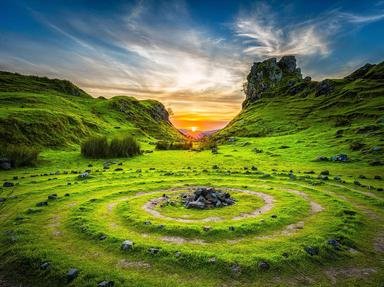Quiz Answer Key and Fun Facts
1. The Cartographer must know it all. In the opening chapters of the 'The Fingerprints of the Gods', Hancock examines the mystery of a very famous map - first created in 1513. Named after the Turkish admiral who 'compiled' these maps from varied sources, they are a source of mystery as they accurately describe the sub-glacial topography of the Antarctic region. Even the U.S Armed forces were perplexed by this as the technology for such accurate cartography was not invented even in early days of the 19th century. By what name are these maps known?
2. Charles Hapgood, searching for maps of Antarctica (at the Library of Congress, Washington DC) during the 1950s found one which was particularly remarkable. Compiled from various sources, it dated back to 1531 - seemingly impossible as Antarctica wasn't discovered till much later, let alone explored and mapped! However, this map showed a land with almost no ice - of mountains, rivers and estuaries. Yet the last time that Antarctica was ice-free would have to be around 4000 B.C. This makes these maps more intriguing for the earliest known human civilisation was around 3000 B.C. and it seems plain absurd to credit the origins of these maps to the apes! Whose maps did Hapgood discover?
3. In the 18th century, an eminent French cartographer cum geographer published a map of Antarctica. The features shown in this map, if accurate, would have predated similar maps (of 1513 and 1531) by at least 1000 years. In fact, it showed a waterway dividing the continent into two regions. Whose maps, published in 1737, were verified during the 1958 seismic survey of Antarctica?
4. Hancock believes in the transition from the Cartographer to the hinterlands of the Pampas. So this quiz will also take that route. If there is anything that intrigues the "It's out there" crowd more than anything else, it is the Nazca lines. These lines are remarkably 'impossible' for an uncivilised culture to have made. Yet these lines are not drawn to scale - the hummingbird is bigger than the monkey; the lizard is bigger than the condor. Maybe the most popular is the 'Spider'. The extensive study of Dr. Phillis Pitluga (Adler Auditorium, Chicago) showed that the spider was a terrestrial diagram of which constellation?
5. The legend that binds the peoples of the Andes is their belief in the Viracocha - the most revered deity after Inti, the Sun God. It is generally believed that Viracocha was responsible for the Nazca lines. He is believed to have come during a time of great turbulence and chaos - teaching the 'primitive' men love, engineering and sciences! Ironically it is this unshaken belief of this legend that finally led to the collapse and destruction of South American empires. Though there are various versions of how Viracocha looked like, they are similar in many aspects. Which of the following is not one of them?
6. Where there is a historical mystery, can Egypt be far behind? Hancock, during the course of his research, found that there were similarities between many things in Ancient Egypt and the South American civilisation. Which is *not* one of them?
7. Just how old the city of Tiahuanaco is a mystery which time may never be able to tell. When the early Spanish travellers asked the natives whether the Incas built the city, they were rebuked and told that this city was constructed a long time before the Incas. Considering the Kalasasaya as an ancient calendar temple, Prof. Arthur Posnansky used the principle of 'obliquity of the ecliptic path of earth' to determine the age of the city. By this method, when was the city built?
8. Hancock suggests that an important feature of the Tiahuanaco was their agricultural skills, which in some respects can beat even modern practices. These include the detoxification of highly poisonous, yet otherwise edible, high-altitude plants and the use of alternating raised and low fields. The latter is still practiced in modern day Bolivia and is so successful that it 'is now under test in many other parts of the world'. What do the natives call this method of farming?
9. Moving on to Central America ... Almost all civilisations here before the Spanish conquest practiced human sacrifice rituals - offering of the heart and blood to the Gods. Many Spanish writers have mentioned the grotesque details. The primary reason for this was to prevent the 'Armageddon' or the end of the world due to the passing of the Fifth Sun. Only the Mayas had calculated the exact date of the 'end of the world'. Which date?
10. Coming to the end of the first part, I will leave you with a simple question. What was the name of the Aztec God remarkably similar in appearance and other characteristic to that of the 'Viracocha' God of the South American natives?
Source: Author
ace_sodium
This quiz was reviewed by FunTrivia editor
bloomsby before going online.
Any errors found in FunTrivia content are routinely corrected through our feedback system.
